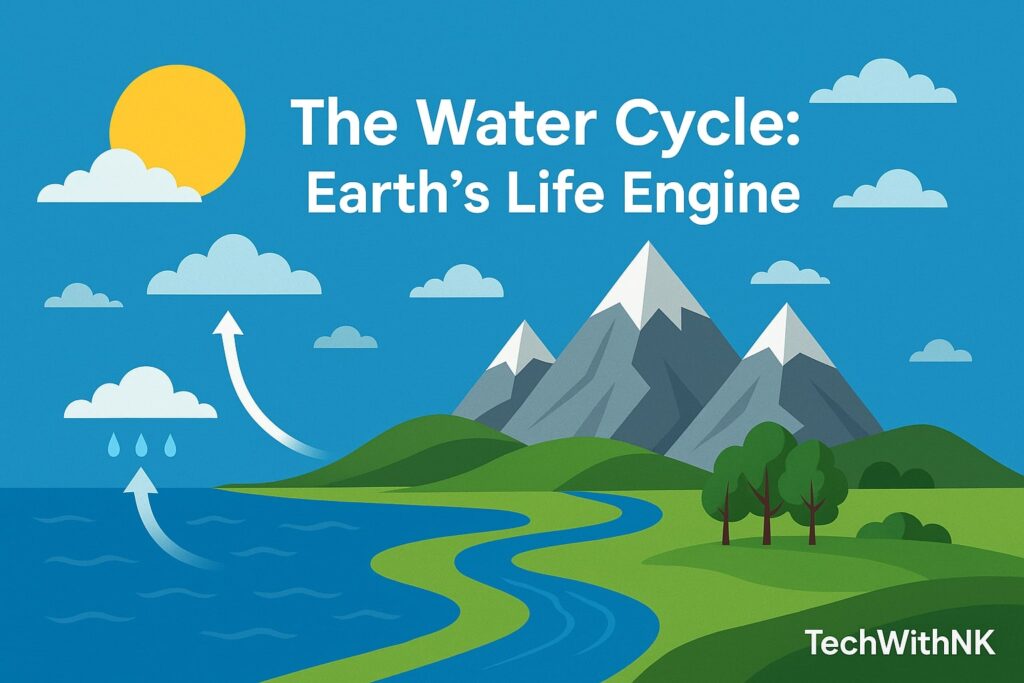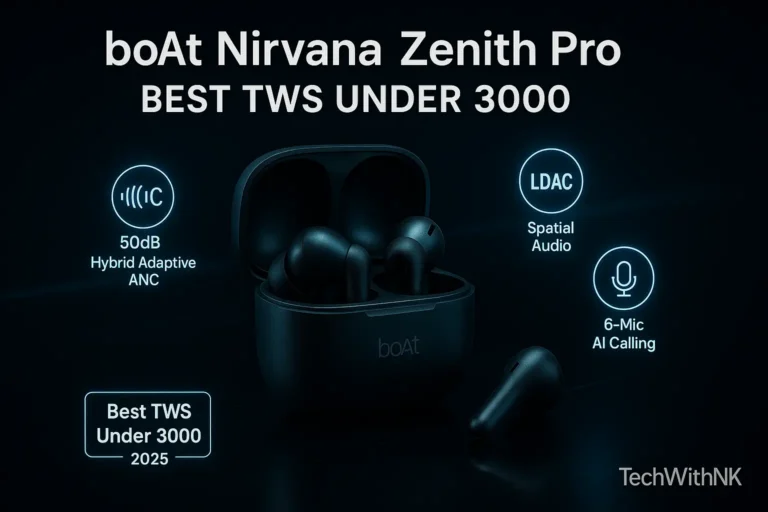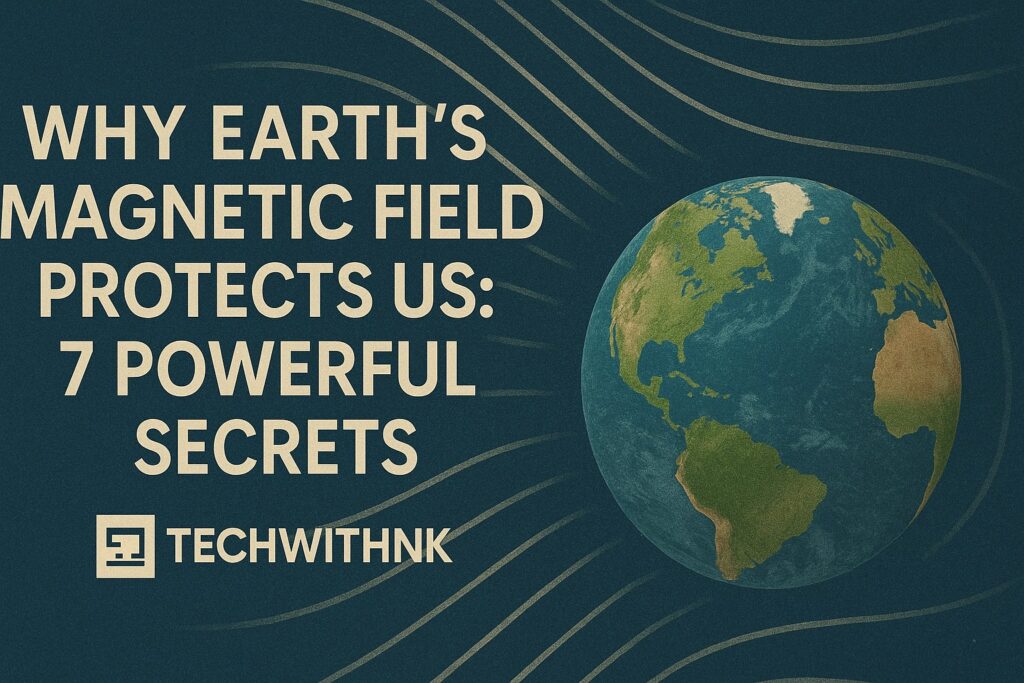Table of Contents
ToggleIntroduction: Why the Water Cycle Is Called Earth's Life Engine
The water cycle—also known as the hydrological cycle—is more than just rain falling from the sky and rivers flowing into oceans. It’s a continuous, life-sustaining system that distributes water, energy, and nutrients across the planet. Without it, no life could survive—not plants, not animals, and certainly not humans.
In this blog, we’ll dive deep into the stages, significance, and environmental impact of the water cycle, why it’s essential to Earth’s balance, and how climate change is altering this fundamental natural engine. Whether you’re a student, educator, or curious reader, this complete guide will give you a fresh perspective on water—our planet’s most powerful force.
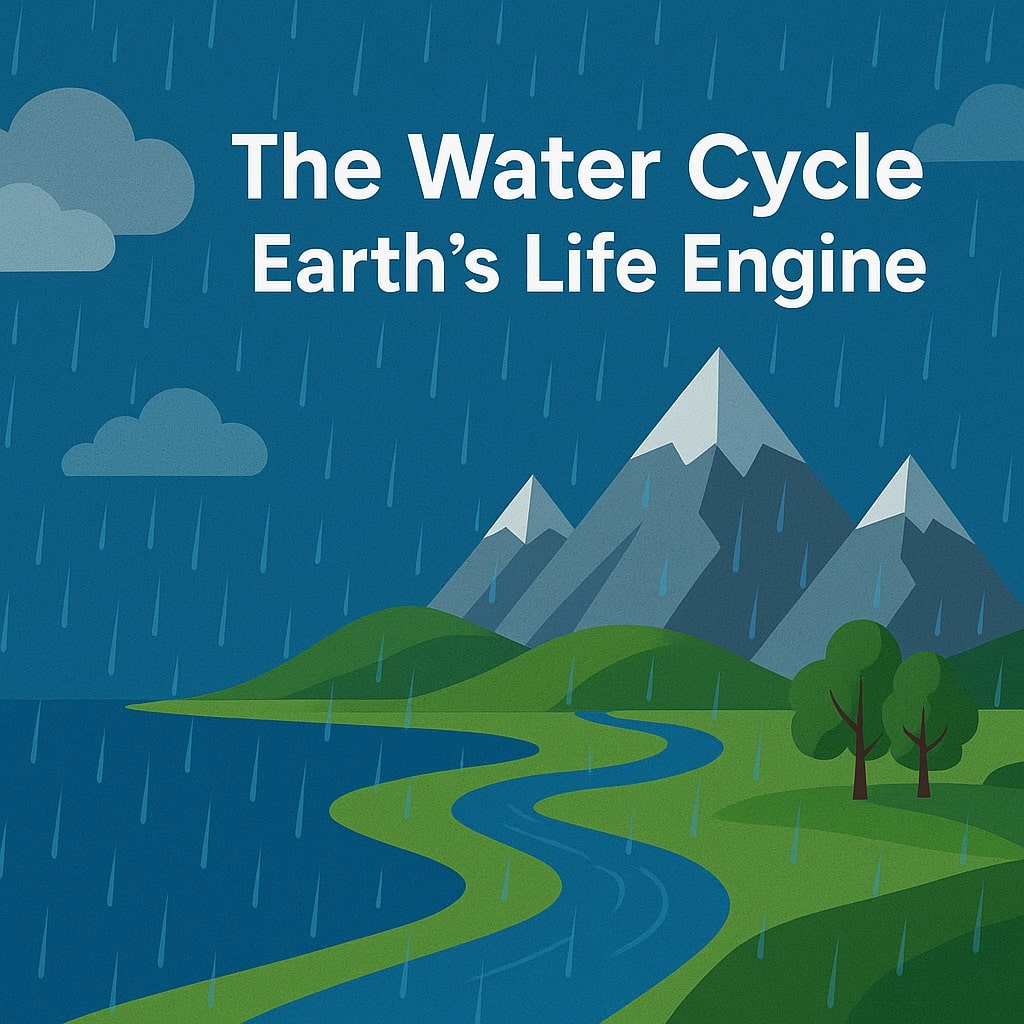
1. What Is the Water Cycle?
At its core, the water cycle is the movement of water in various forms—liquid, vapor, and ice—through Earth’s atmosphere, surface, and underground systems. It’s a closed loop, which means no new water is added or removed; it’s simply recycled endlessly.
This cycle helps:
Regulate temperature
Fuel weather patterns
Distribute freshwater
Support agriculture and life systems
2. The Main Stages of the Water Cycle
Let’s break down the key processes of the water cycle:
2.1 Evaporation
Water from oceans, lakes, and rivers heats up and turns into vapor, rising into the atmosphere. This process is powered by solar energy.
Fun Fact: Oceans contribute over 80% of the water vapor in the air!
2.2 Transpiration
Plants also release water vapor into the air through their leaves, a process called transpiration. Combined with evaporation, we call it evapotranspiration.
2.3 Condensation
As water vapor rises and cools down, it condenses into tiny droplets, forming clouds. This is the stage where invisible vapor becomes visible again.
2.4 Precipitation
When these droplets combine and grow heavy, they fall as rain, snow, sleet, or hail—depending on the temperature and altitude.
2.5 Collection (Runoff & Infiltration)
After precipitation, water either:
Flows into rivers, lakes, and oceans (runoff)
Soaks into the ground (infiltration), recharging groundwater supplies
3. Why Is the Water Cycle Important for Life?
The water cycle touches every part of our environment:
Plants need rain to grow.
Animals need water to drink and regulate their body temperature.
Humans use water for agriculture, sanitation, and industry.
Ecosystems like forests, wetlands, and deserts all depend on different stages of the water cycle.
No water cycle = no life.
4. The Role of the Sun and Gravity
The sun provides the energy for evaporation, while gravity pulls water back down to Earth during precipitation and runoff. These two forces keep the cycle in motion 24/7.
Without the sun, the water cycle would freeze.
Without gravity, rain wouldn’t fall, and water wouldn’t collect in rivers or aquifers.
5. Underground Water: The Invisible Reservoir
Much of Earth’s freshwater exists underground in aquifers—porous layers of rock and soil that store water. This groundwater is slowly replenished through infiltration and is a critical backup during droughts.
Did you know? About 30% of the world’s freshwater is stored as groundwater!
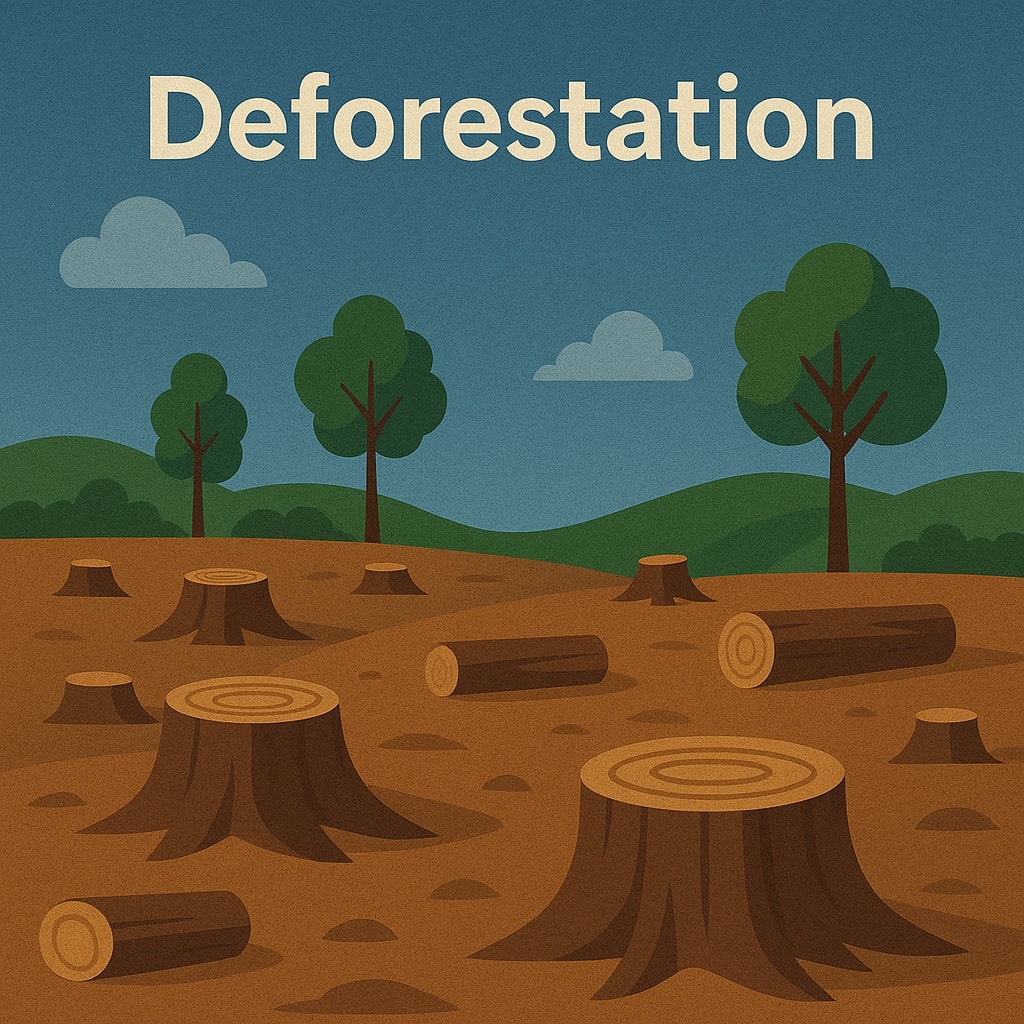
6. Human Impact on the Water Cycle
6.1 Urbanization
Paved cities reduce infiltration and increase surface runoff, causing flooding and reduced groundwater recharge.
6.2 Deforestation
Fewer trees mean less transpiration, which can disturb local rainfall patterns.
6.3 Pollution
Factories and agriculture introduce toxins into water sources, which then get circulated through the water cycle—impacting ecosystems and human health.
6.4 Climate Change
Perhaps the biggest disruptor, climate change alters temperature and humidity levels, leading to:
More intense storms
Longer droughts
Melting glaciers and rising sea levels
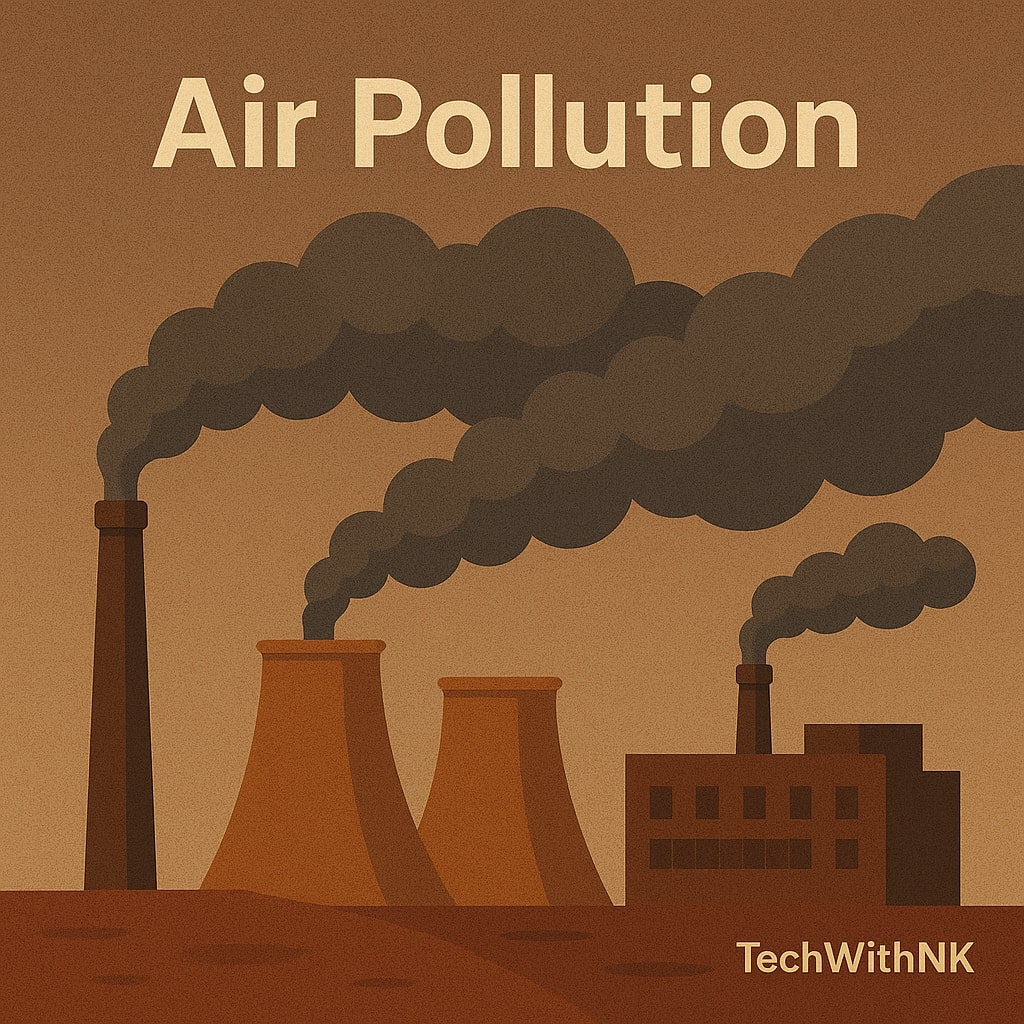
7. Climate Change and the Intensifying Water Cycle
A warmer atmosphere holds more moisture, which means more intense rainfalls and floods in some places—and dry spells and droughts in others. This uneven distribution of water is one of the biggest global challenges we face today.
Example:
India’s monsoon is arriving later and becoming less predictable—affecting millions of farmers.
8. The Water Cycle and Natural Disasters
Understanding the water cycle is crucial for predicting and managing natural disasters:
Floods occur when runoff exceeds soil absorption.
Droughts happen when precipitation is below average.
Landslides often follow heavy rain in hilly areas.
Hurricanes form over warm oceans rich in evaporated water.
9. How We Can Protect the Water Cycle
We can’t stop the water cycle, but we can keep it in balance:
Plant more trees to boost transpiration
Use permeable pavements in urban areas
Harvest rainwater for reuse
Fix leaks and avoid wasting water
Reduce pollution from plastic, chemicals, and fertilizers
Support climate action to reduce carbon emissions
10. Fascinating Water Cycle Facts You Should Know
The amount of water on Earth hasn’t changed in billions of years—we drink the same water dinosaurs once did!
Only 3% of Earth’s water is freshwater—and most of it is trapped in glaciers.
Water can spend thousands of years underground before rejoining the cycle.
Clouds may look light, but a single cloud can carry hundreds of tons of water!
Conclusion: A Cycle Worth Protecting
The water cycle is Earth’s life engine—recycling water to fuel every living system on the planet. From the clouds above us to the aquifers below, it’s a marvel of natural engineering that keeps our world alive.
As the climate warms and pollution increases, it’s more important than ever to understand, respect, and protect this cycle. By making conscious choices in our daily lives and supporting sustainable policies, we ensure that this precious system keeps flowing—for us and for future generations.
What are the 5 main stages of the water cycle?
The five primary stages of the water cycle are:
Evaporation
Transpiration
Condensation
Precipitation
Collection (Runoff and Infiltration)
These steps continuously recycle water through Earth’s systems.
Why is the water cycle important for life on Earth?
The water cycle provides freshwater for drinking, nourishes crops, regulates temperatures, and supports ecosystems. It’s a self-sustaining process that powers life on our planet.
What is groundwater, and how is it part of the cycle?
Groundwater is water stored underground in soil or rock layers called aquifers. It’s replenished through infiltration and tapped by wells for agriculture and drinking.

